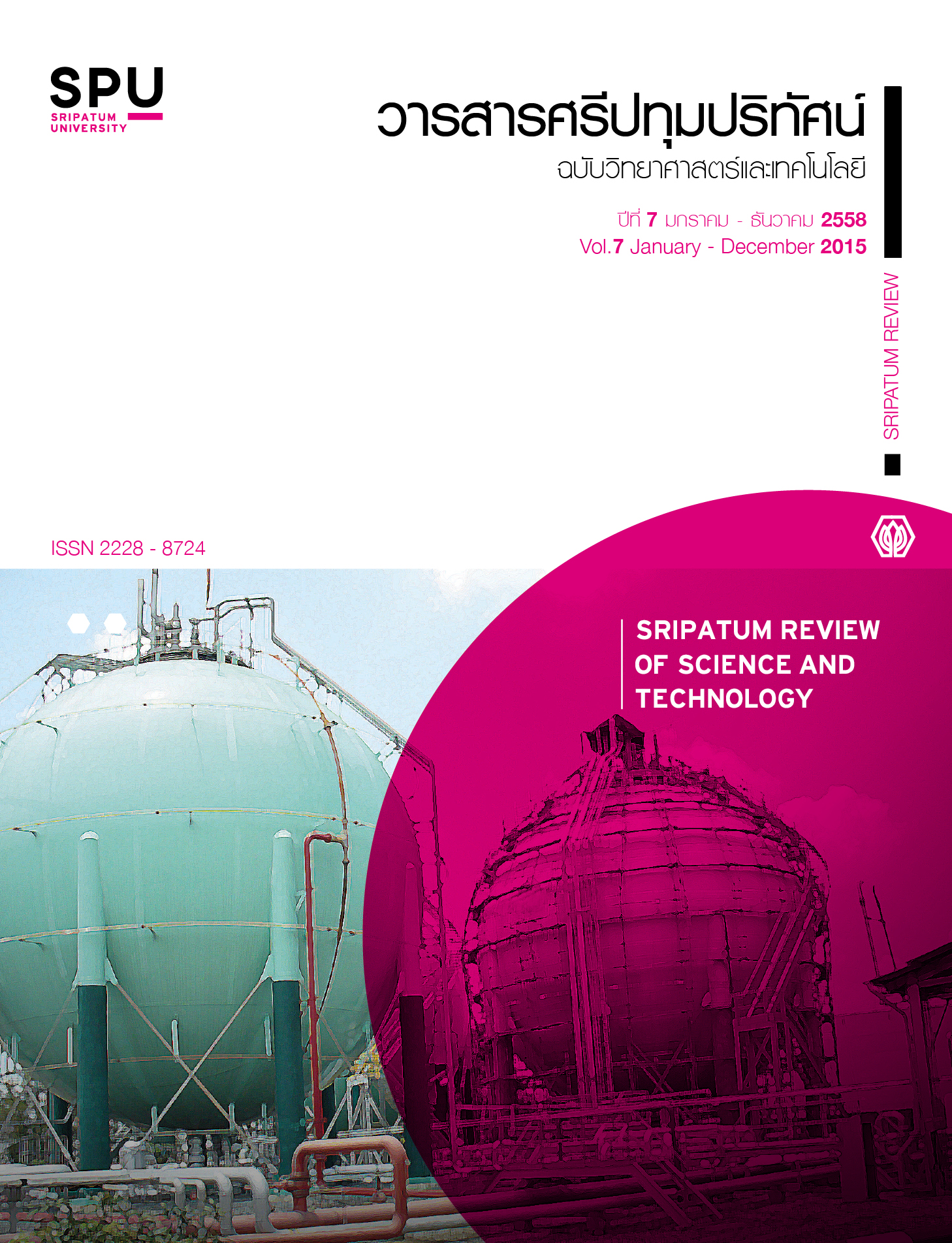ANALYSIS OF AIR VENTILATION IN FACTORY VIA COUPLED MODELS
Main Article Content
Abstract
The objective of this research was to study the ventilation system in factory without air conditioning using coupled models that combined computational fluid dynamics (CFD) with heat transfer to design the number of ventilators in factory and find the appropriate size of ventilators in the factory. The temperature within the ventilated factory was used as the indicator. The model of factory was two-dimensional, using free triangular elements of mesh, which operated with no slip wall, at steady state, with density of air in direct variation with the temperature resulting in uplifting of hot air. The numbers of ventilators used in this study were 4 and 6. The sizes of top ventilators (V) were 0.25 meter and 0.315 meter; while the sizes of side ventilators (L) were 0.25 meter and 0.35 meter. The heat received from the roof and that occurred within the factory were determined to be equal. The research findings showed that a factory with six top ventilators with the size of 0.25 meter and the size of side ventilator of 0.35 meter could remove heat from within the factory better than the factory with four top ventilators as shown by the average temperature within the factory with six top ventilators being lower than that within the factory with four top ventilators.
Article Details
References
Aung, W., Fletcher, L. S. and Sernas, V., 1972. “Developing laminar free convection between vertical flat plates with Asymmetric Heating.” International Journal Heat Mass Transfer. Vol. 15, pp. 2293-2308
M.P. Straw, C.J. Baker, A.P. Robertson, 2000. “Experimental measurements and computation of the wind induced ventilation of a cubic structure.” Journal of Wind Engineering and Industrial Dynamics. 88, 213–230.
R. Ramponi, 2012. “CFD simulation of cross-ventilation for a generic isolated building: Impact of computational parameters.” Building and Environment 53
R. Ramponi, 2012. “CFD simulation of cross-ventilation flow for different isolated building configurations: Validation with wind tunnel measurements and analysis of physical and numerical diffusion effects” J. Wind Eng. Ind. Aerodyn. 104–106


